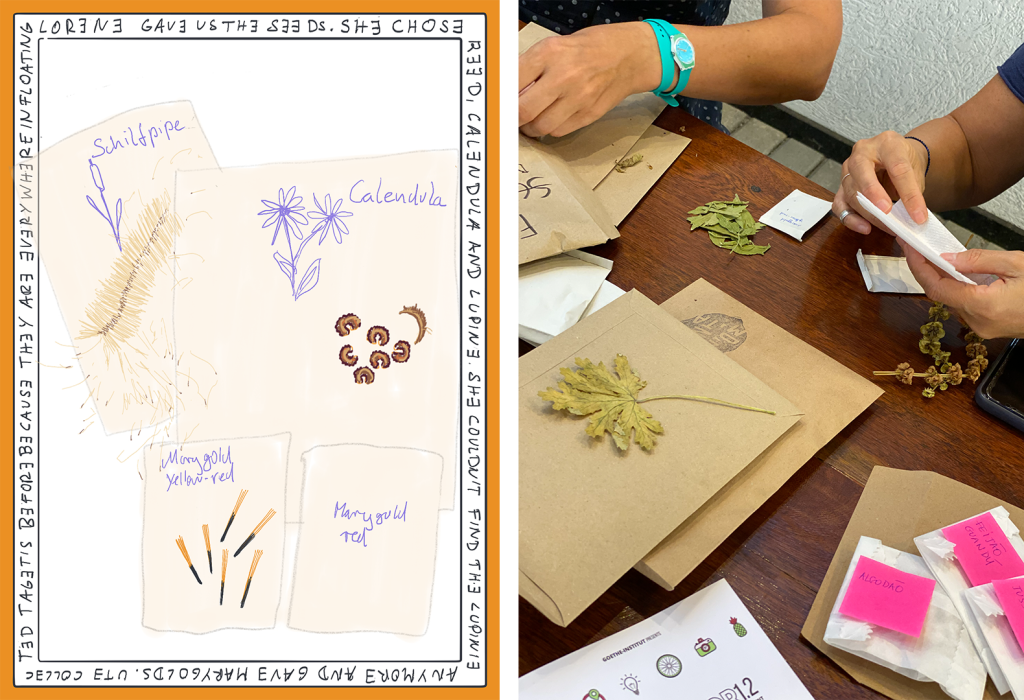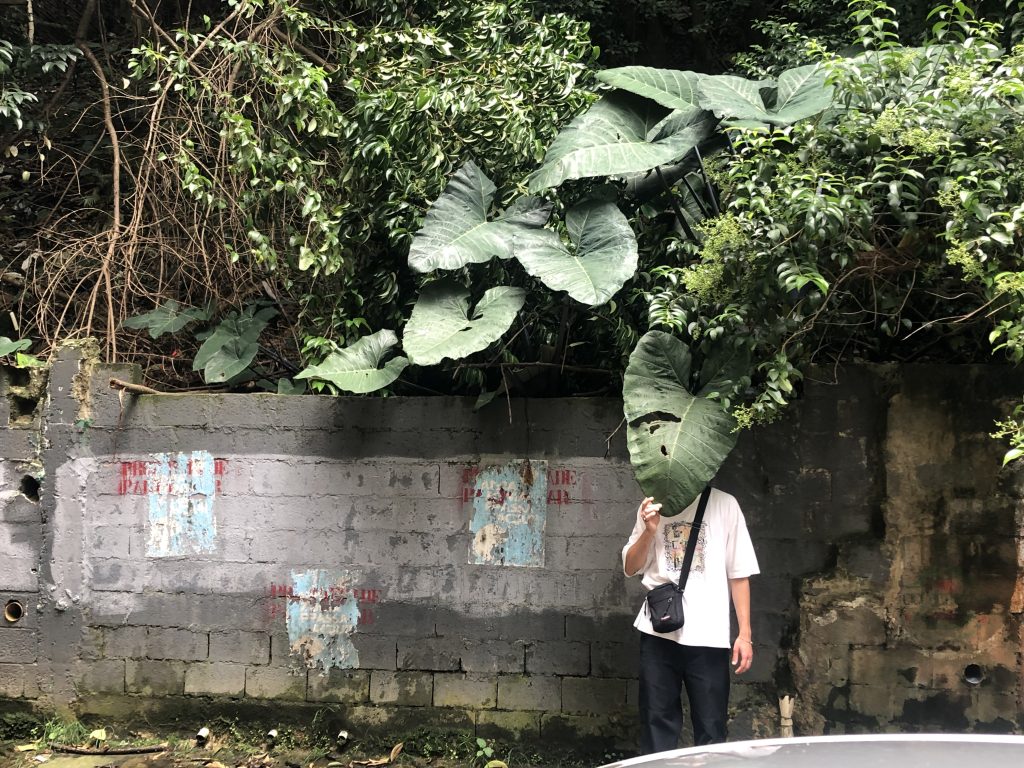- recipe_seeds-balls_en
- receita_bombas-sementes_pt
Downloads:

Seed balling is a tactic used by communities to respond to environmental degradation. They mix seeds, soil and water in close correspondence with the environments they come from and travel to. The following story unfolds between three riparian communities and their spontaneous encounters between Berlin, Jakarta and São Paulo.

Seeds of reeds and other wild or cultivated plants were collected by members of the gardening group of Floating University in Berlin. Wrapped in recycled prints, they travelled with the group to São Paulo as gifts. When Floating arrived in São Paulo, an employee of the Goethe Institut saw the seed balls: “Ah, we have seeds too, let’s meet and exchange them”.

Packages of maize, açaí jussara, urucum, feijão guandu and cotton seeds, collected from the community gardens and riverbank ecologies of the Saracura river in downtown São Paulo were given to Floating members by the Salve Saracura collective to take back to Berlin.

During the meeting in São Paulo, riparians from Labtek, Floating and Salve Saracura began exchanging seeds and gardening together. The Floating members found a Taioba plant in the Goethe Institut garden, a riparian species which was soon reencountered at the contested banks of the Saracura river in São Paulo as part of another tactic.

The gesture of bringing seed balls was found to be something that Floating and Salve Saracura had in common. They shared with members of Labtek the experience of grief over the cleaning, cutting, and dying of reeds, mangroves, taioba and other riparian species, and the desire for reforestation. In a workshop with children on un-covering the buried Saracura River, local community gardener Jacinto told them many stories about seeds. Over lunch, Neide handed over seeds of native species from her Quilombo community in the Atlantic Forest. Later, on the street, a woman gave them lots of mirabilis seeds she had in her pocket.

With this collection of seeds and stories, the children drew their relationship with the river Saracura. Jacinto joked that the seed balls looked like food they loved: Coxinhas, fried Brazilian chicken balls. Coxinhas are folded to resemble a drumstick. And we used the balls to wake up the river that we compared to a silenced drum from an old Togolese story.

“Muvuca de nascentes”, an activity of collective seeding by the river springs, became a tactic for making seed balls to heal the deforested banks of the Saracura river. Muvuca is an indigenous word for a restoration method that involves planting seeds that can be mixed without eradicating the others. When the Saracura children threw the seed balls at the river banks, it started to rain. A few days later, the street that covers the river in downtown São Paulo was flooded.